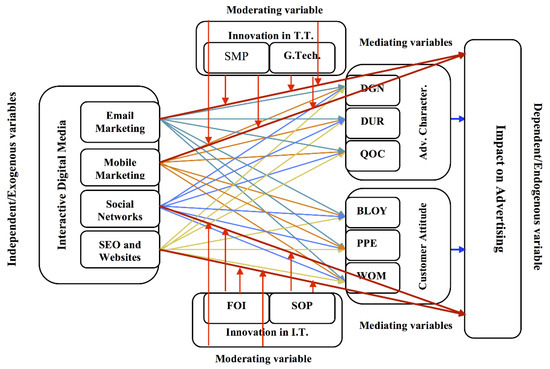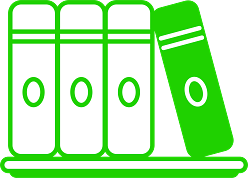
The rapid evolution of marketing in the 21st century isn’t just about better ROI or more creative campaigns—it’s also about sustainability. Traditional paper-based advertising has long been a staple of business promotion, but it’s increasingly clear that its environmental costs are too high. Enter digital marketing: a flexible, cost-effective, and eco-conscious alternative that aligns with the global push for environmental responsibility.
Table of Contents
Sr. Headings
1. Introduction
2. What is Traditional Paper-Based Advertising?
3. The Environmental Cost of Paper Ads
4. Rise of Digital Marketing
5. Environmental Benefits of Going Digital
6. Case Studies: Brands Making the Shift
7. Cost Efficiency and Scalability
8. Consumer Behavior and Digital Preference
9. Barriers to Full Digital Adoption
10. Conclusion: A Greener Marketing Strategy
11. FAQ’S

Introduction
In today’s environmentally conscious world, businesses are re-evaluating how they connect with customers. One major shift? Moving away from traditional, paper-based advertisements toward more sustainable digital marketing methods. This blog dives deep into how that transition benefits not just brands—but the planet too.
What is Traditional Paper-Based Advertising?
Traditional advertising often involves physical materials like flyers, billboards, magazines, direct mail, and newspapers. These methods have dominated marketing for decades but come at a steep environmental cost.
The Environmental Cost of Paper Ads
Creating paper for advertisements contributes to deforestation, water usage, and greenhouse gas emissions. The printing process involves harmful chemicals, and distribution requires fuel and logistics, increasing the carbon footprint significantly.
Rise of Digital Marketing
With the rise of the internet, smartphones, and social media, digital marketing has taken center stage. From email campaigns and social media ads to search engine marketing and content creation—brands now have numerous online tools that reach more people with less environmental strain.

Environmental Benefits of Going Digital
Reduced Paper Use: Less paper means fewer trees cut down.
Lower Emissions: Digital campaigns don’t need trucks, planes, or postal services.
Minimized Waste: No physical materials that end up in landfills.
Energy Efficiency: While digital platforms use energy, they are far more efficient per impression than print.
Case Studies: Brands Making the Shift
IKEA has moved from its famous paper catalogs to fully digital versions, saving tons of paper annually.
Coca-Cola significantly cut print ads and boosted online video marketing to align with sustainability goals.
Cost Efficiency and Scalability
Digital marketing not only helps the environment—it’s cheaper and easier to scale. You can reach global audiences instantly, track engagement in real time, and optimize campaigns without the overhead of print production and distribution.
Consumer Behavior and Digital Preference
Today’s consumers prefer online shopping, reading news on apps, and engaging with brands on social media. Digital marketing aligns with this behavior, offering convenience and personalization that print can’t match.
Barriers to Full Digital Adoption
Some industries and demographics still rely on physical materials. Digital inequality, privacy concerns, and resistance to change can hinder a full switch. However, trends suggest these barriers are shrinking year by year.


Digital marketing eliminates the need for paper, ink, and physical distribution, reducing deforestation, chemical waste, and carbon emissions. It’s a cleaner, more sustainable way to reach audiences without harming the planet.
Traditional advertising often involves cutting down trees for paper, using energy-intensive printing processes, and transporting materials—which all contribute to greenhouse gas emissions and landfill waste.
While digital platforms do consume energy, especially through data centers and devices, their environmental footprint is significantly smaller than print media when used efficiently.
Yes! Digital marketing offers scalable solutions like social media ads, email marketing, and SEO that are often cheaper and more measurable than traditional print campaigns.
Yes. IKEA discontinued its printed catalogs in favor of digital formats, and major brands like Nike and Coca-Cola now prioritize digital campaigns to reduce environmental impact.
Conclusion
A Greener Marketing Strategy Switching to digital marketing is more than a smart business move—it's a statement of environmental responsibility. By reducing reliance on traditional print ads, businesses can lower their ecological footprint while reaching wider, more engaged audiences.
Digital Marketing Integrated Simulation & Certification Program
🔹 Duration: 4.5 Months
🔹 Ideal For: Job Seekers, Career Switchers
🔹 Outcome: Hands-on Skills, Real-time Simulation
🔗 View Course Details
Digital Marketing Associate Program
🔹 Duration: 6 Months
🔹 Ideal For: Professionals, Freelancers, Part-Time Workers
🔹 Outcome: Advanced Certificate, Strategy + Execution
🔗 View Course Details
Digital Marketing & Analytics With Simulation AI Program
🔹 Duration: 6–9 Months
🔹 Ideal For: Entrepreneurs, Marketing Leads
🔹 Outcome: Data-Driven Marketing, Analytics, Sales Optimization
🔗 View Course Details
Digital Marketing Strategy Program (Certified from Foreign University)
🔹 Duration: 9–11 Months
🔹 Ideal For: Managers, International Career Aspirants
🔹 Outcome: Postgraduate Diploma, Strategic Planning
🔗 View Course Details
OCP Academy
(A Unit of OCP Foundation)
Learning Today, Leading Tomorrow





